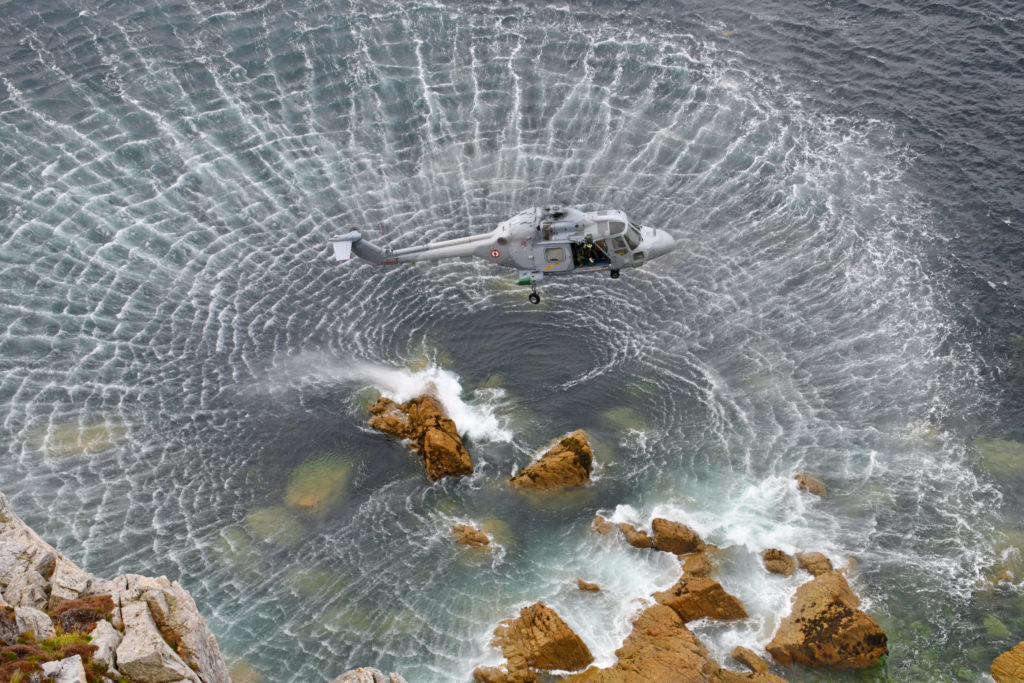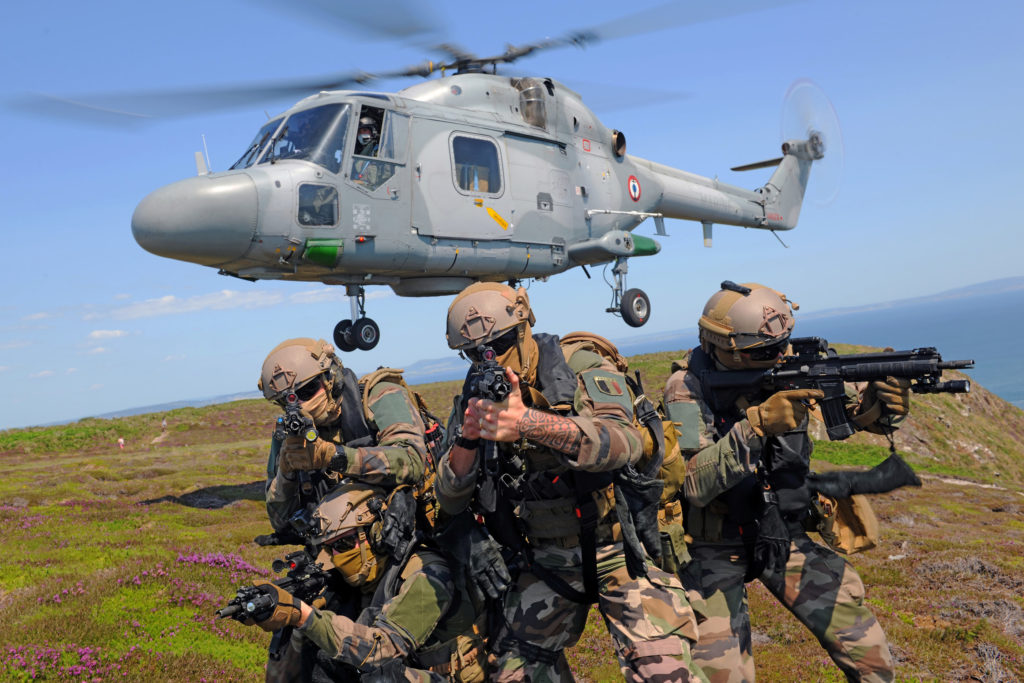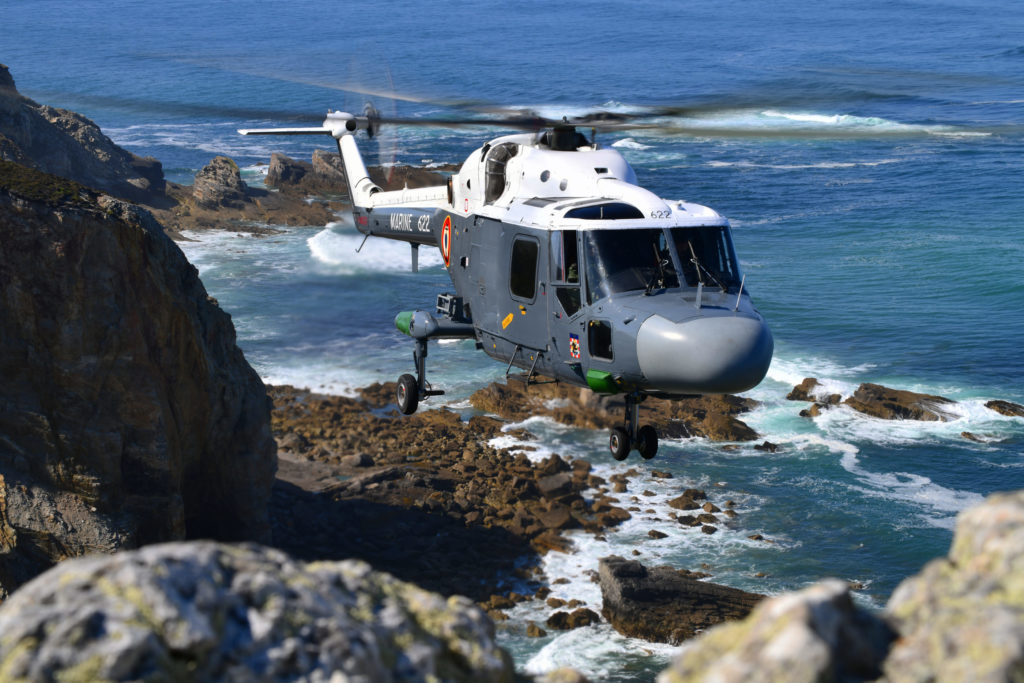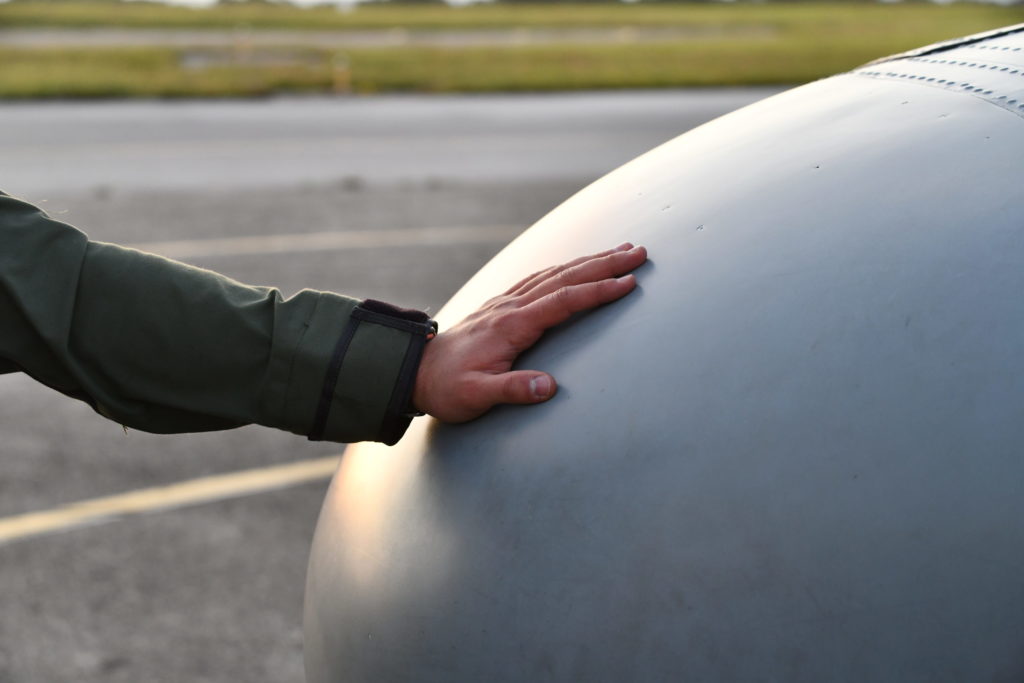In 1967, France and Britain decided to harmonize their helicopter fleets and agreed to equip their armies with three types of aircraft common to both: the SA 330 Puma and SA 341/2 Gazelle — both developed by Aérospatiale in France — and the WG13 Lynx, built by Westland in the U.K.
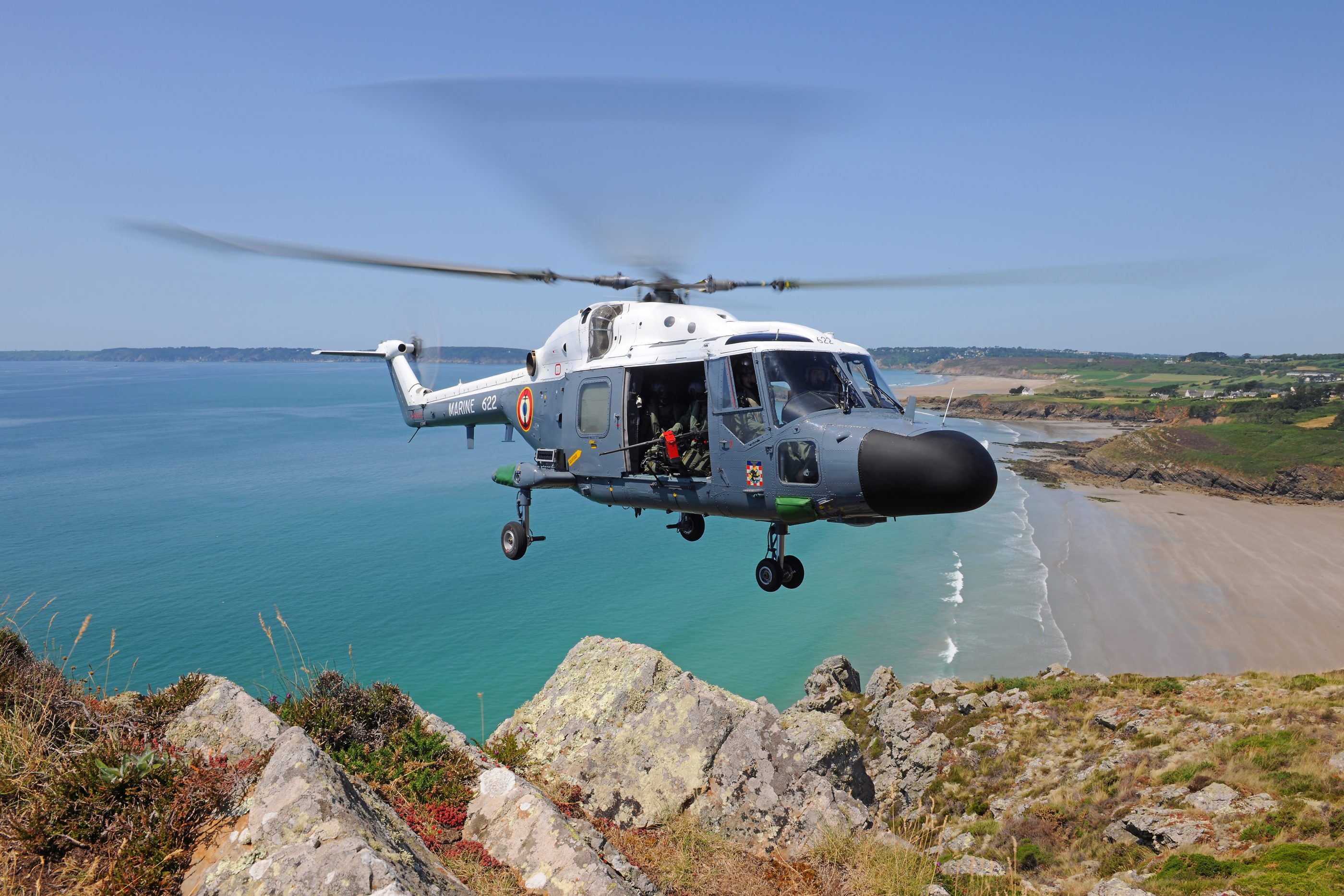
By avoiding duplication of effort, at least on the development side, the two allied nations were able to equip their forces with modern aircraft at a relatively affordable cost. And so it was that 40 of a planned fleet of 50 Lynx helicopters joined the French Navy beginning in 1978.
As of July 2020, France’s Lynx fleet had dwindled to a mere five aircraft. The last remaining unit flying Lynxes, 34F flotilla, was put in dormant status on Oct. 5.
A rich experience
At Lanvéoc Poulmic, in French Brittany, 34F’s base has the atmosphere of a family home. Drawings by children from sponsoring communities share space on the walls with newspaper clippings yellowed by years and a collection of posters that bear witness to the rich history of the unit. The buzz is incessant, because the flotilla makes a point of flying its helicopters until the last minute.
“The activity of the 34F is incredible, the amount of flying time you can grab in this flotilla is crazy,” said Ensign Alexis, the last young pilot qualified on the Lynx. “There are only nine pilots left for five helicopters and we are not idle. I have accumulated 240 flight hours in the last 12 months, and what great hours! Aircraft handling, maneuverability, ASM training. . . . The flotilla concentrates an incredible knowhow and this represents for me a magnificent opportunity to accumulate a very rich experience.”
The Lynx’s entry into service in France and across the Channel at the end of the 1970s revolutionized the use of helicopters at sea for these two countries. With its 4.8-tonne maximum takeoff weight, the Lynx is a remarkable aircraft specifically designed for service at sea.
“Compact, powerful, maneuverable and solid” are the qualifiers that come up most often in the conversation with crews who have served with the aircraft. Two helicopters could be accommodated simultaneously in the hangars of French Tourville-class frigates, a capacity that cannot be matched by the bulkier NH90 that will replace the Lynx. The Lynx was also designed to be transportable in a C-160 Transall or a C-130 Hercules tactical cargo aircraft.
Fast but cramped
The beating heart of the Lynx are its twin Rolls Royce Gem turbine engines which deliver around 1,100 horsepower at maximum emergency power. Power then passes through an equally compact main gearbox (MGB) interfacing with the partially rigid rotors with star-shaped, titanium heads designed to absorb the flapping of the blades.
“This rotor offers great maneuverability to the aircraft,” said Cmdr. François Chaput, the last commanding officer of the flotilla. “But all this power and compactness, especially with the proximity of the rotor to the fuselage, comes at the cost of a high level of vibration at high speed.”
In the late 1990s, the next-generation British Experimental Rotor Program blades arrived, giving the Lynx better speed and hover performance, albeit at the cost of a slight loss of stability.
For all its capability, the Lynx is not without faults. Aside from its relatively intense vibration and noise, it also has a somewhat small inboard compartment capacity. In front of a dedicated work console, the on-board electronic technician’s helmet touches the ceiling. In terms of performance, the anti-torque rotor seems undersized to handle all the power of the aircraft and negotiate high crosswinds and the maximum forward speed is just 135 knots. On the other hand, the other Lynx user countries followed the British in their various retrofit projects, including modifying the anti-torque rotor to give it greater authority.

Versatility
In more than 40 years of service, France has invested relatively little to update its Lynx helicopters, to the regret of their users.
Crewmembers assigned to 34F Flotilla said they dreamed of flying more up-to-date variants like the German Lynx Mk 88. France launched an upgrade effort in 2015, which brought the integration of a GPS, a long-range low-frequency radio, an encrypted L11 data link and an AIS identification systems for ships. But the weapon system remained essentially the same, confirmed by a quick glance in the cockpit. The two pilots face an electromechanical instrumentation dash with a single monochrome radar screen, the size of a tarot card, facing the onboard commander.
Within the navy, about a third of the missions are generally devoted to what is called “action of the State at sea,” meaning countering trafficking of all kinds, fishing assistance, search-and-rescue and other maritime missions. The Lynx always carries a winch on the right door because a rescue at sea is never to be ruled out.
Counter-narcotics missions against drug trafficking are also frequent in the western Mediterranean and during deployments in the Indian Ocean and the Caribbean. Drug interdiction missions are performed day and night, with an on-board sniper or door-mounted ANF1 7.62mm machine gun.
Using the Lynx as a primary aircraft,34F Flotilla was assigned to anti-submarine (ASM) alert duty, supporting friendly submarines while hunting and assisting in the fight against enemy subs. Here the French Lynx found its preferred environment.
Lethal torpedoes
In the 1980s, the Lynx could carry two U.S.-made Mk46 torpedoes, subsequently replaced by French MU90 Murène (moray). Heavier and longer than the Mk46, only one MU90 was carried on the right side of the aircraft. Because the Murène was longer than the MK46, test drops identified a risk that the parachute used to drop the torpedo could catch in the tail rotor located on the left side of the fuselage.
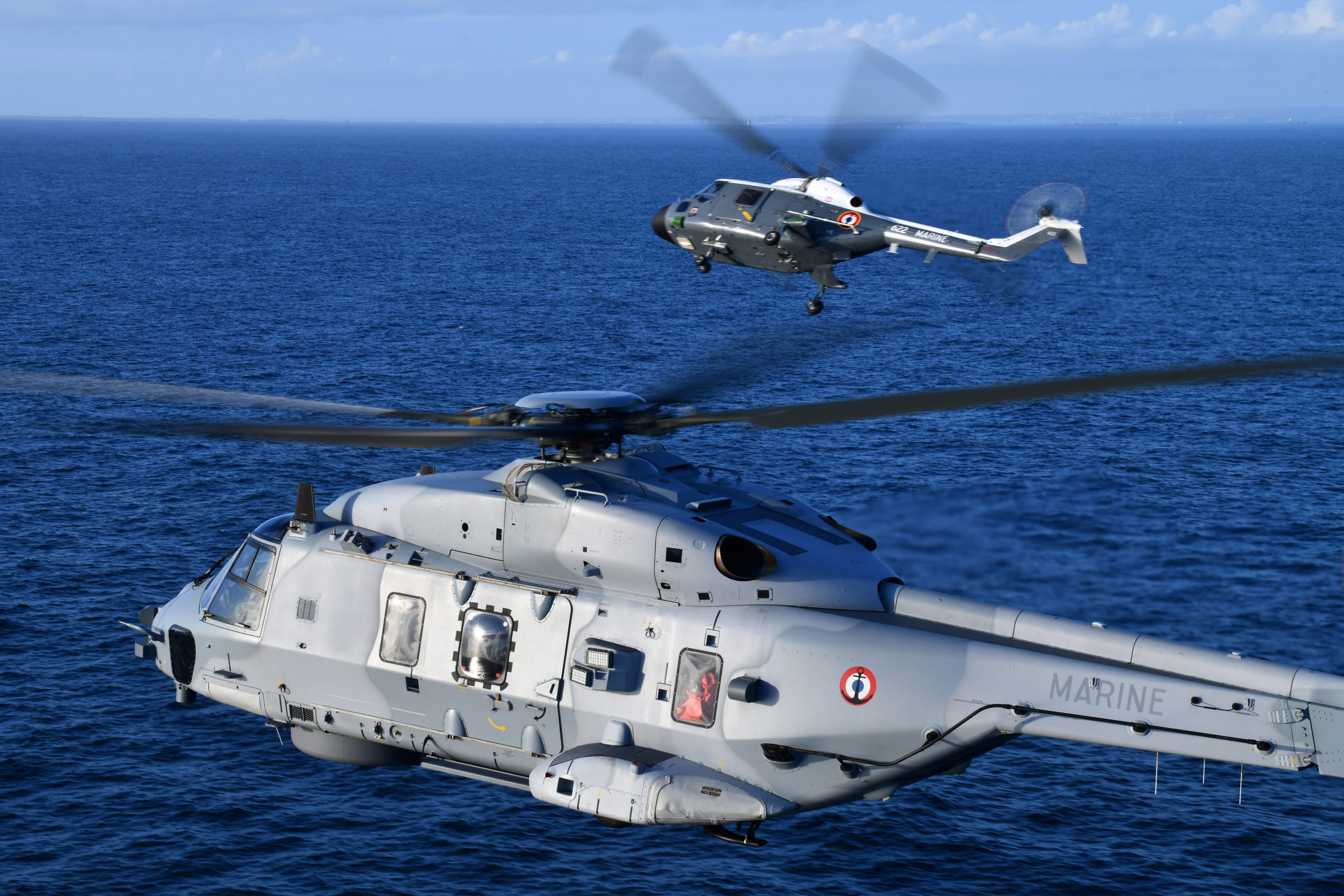
Anti-surface warfare was carried out with the Omera ORB-31 radar. the Lynx then played the role of scout and target designator in support of French naval ships.
“Our job consisted of following the target visually or by radar,” explained one Lynx pilot, “The information then being transmitted by Link 11 to the best-placed vessel which would eventually be able to engage the target.”
Missing the missile
Originally the Lynx could fire AS12 missiles, targeting and guidance being done with the SFIM gyro-stabilized telescope used by the aircraft commander in the left seat, said Chaput. “The missile’s performance was limited with less than 10 kilometers [6.2 miles] range, optical guidance and a warhead of just 28 kilograms [61 pounds]. But with a four-missile carrying capacity, it was still a significant capability against weakly defended targets. Against heavier ships, the light missile was able to damage or slow down the enemy.”
The navy was the last French user of the AS12, which was retired from service in 1991, after a Lynx flying from the frigate Jean de Vienne fired the last shot during the Persian Gulf War. Despite its best efforts, the French Lynx community never regained a missile capability.
“This loss of capacity has severely handicapped our operational capacities in anti-surface mission,” Chaput said. “A light missile would have given us a certain degree of autonomy in anti-surface missions and it could have saved our carrier ship from having to approach the enemy itself to engage it.”
The Lynx pilot’s long walk
A versatile aircraft engaged in difficult missions, from terra firma or the moving flight deck of a ship, day or night, the Lynx demanded a lot from its pilots.
Qualifying to fly the Lynx was a rigorously selective process that could last several years. Young pilots fresh from 22S helicopter training squadron, started with the elementary pilot qualification (EP) obtained after 10 hours of flight and numerous sessions in a simulator. The next step, the operational pilot qualification (PO) required around 60 additional missions, many at night, and more time in the sim. Qualifying for night landing on ships required a string of four training sessions of six landings each in less than two months, which in practice could only be obtained during a deployment on a ship.

After a year in his PO suit, the pilot could then aim to first become a non-tactical captain leading relatively simple missions. Then came daytime tactical flight captain and, finally, after a minimum of three years of experience, operational helicopter commander, fully capable of leading daytime and nighttime missions. The final step was to qualify as a “confirmed operational helicopter commander,” which allowed a pilot to take command of a complex mission involving several helicopters of different types.
Several shades of gray
It was decided in September 2020 to retire the weathered and weary Lynx fleet. After 42 years of service, scars from multiple deployments began to show and not to heal. Cracks, leaks and various other symptoms of hard service made it increasingly difficult for mechanics to maintain the fleet’s availability.
The sky, the sea and the Lynx in its latest camouflage bring together all the shades of gray for which French Brittany is famous. To properly celebrate the end of the aircraft, the 34F spared no expense in June by repainting helicopter 622 in the magnificent original colors (top of the fuselage in white) and aircraft 273 in the uniform dark blue which succeeded it. Lynx 621, 806 and 272, sporting the latest two-tone camouflage, completed the quintet of the last aircraft in service.






